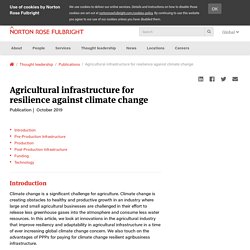

SKY, Cittadini responsabili. Mission 2 Task 2. Lab-grown food is about to destroy farming – and save the planet. It sounds like a miracle, but no great technological leaps were required.

In a commercial lab on the outskirts of Helsinki, I watched scientists turn water into food. Through a porthole in a metal tank, I could see a yellow froth churning. It’s a primordial soup of bacteria, taken from the soil and multiplied in the laboratory, using hydrogen extracted from water as its energy source. When the froth was siphoned through a tangle of pipes and squirted on to heated rollers, it turned into a rich yellow flour. This flour is not yet licensed for sale. But pancakes are not the intended product. The hydrogen pathway used by Solar Foods is about 10 times as efficient as photosynthesis. We are on the cusp of the biggest economic transformation, of any kind, for 200 years.
Several impending disasters are converging on our food supply, any of which could be catastrophic. Food production is ripping the living world apart. Not only will food be cheaper, it will also be healthier. Agricultural infrastructure for resilience against climate change. Introduction Climate change is a significant challenge for agriculture.

Climate change is creating obstacles to healthy and productive growth in an industry where large and small agricultural businesses are challenged in their effort to release less greenhouse gases into the atmosphere and consume less water resources. In this article, we look at innovations in the agricultural industry that improve resiliency and adaptability in agricultural infrastructure in a time of ever increasing global climate change concern. We also touch on the advantages of PPPs for paying for climate change resilient agribusiness infrastructure. Agriculture is a substantial contributor to greenhouse gases and uses a significant amount of freshwater. The ecological and geographical diversity of the agricultural industry means that there are a number of potential resiliency structures that could be utilized to adapt to climate change. Pre-Production Infrastructure Production Post-Production Infrastructure.
Environmental innovation in the construction sector. According to WRAP, sustainable resource advocates, the UK construction industry is responsible for 45% of our carbon emissions as well as 33% of all waste produced.

This sector also continues to be the least productive in the UK economy, as well as having one of the lowest levels of digitalisation in the world. This is partly due to a lack of investment, as well as a fear of risks. However, this could be due to change, partly thanks to the Industrial Strategy Challenge Fund. This will develop digital, manufacturing and renewable energy technologies for the construction sector which, combined with improved business models, McKinsey believe could increase productivity by between 50 and 60%, as well as reducing waste. World Green Building Trends surveyed over 2,000 industry participants including architects, engineers and contractors, and found nearly half intend to make their projects greener over the next 3 years. Heating, ventilation and air-conditioning (HVAC) Clothes designed to grow as children age could mean savings for parents while cutting waste.
Businesses developing pioneering products to fight plastic pollution and clean up our oceans to receive funding boost projects across the UK, from Bath to Edinburgh and London to Yorkshire, are being backed by the government / Sky Ocean Ventures partnership green economy already growing faster than other sectors with green jobs expected to grow up to 2 million by 2030 Innovative businesses creating green alternatives to plastic bottles, cosmetic beads and synthetic materials are being backed by new funding from the government and Sky. 10 projects have been given a funding boost from the government and Sky Ocean Ventures – Sky’s impact investment fund – to find fast and future-proof solutions to the ocean plastics crisis.

Bath-based company Naturbeads is developing a biodegradable alternative to microscopic plastic beads found in cosmetics including exfoliators and toothpastes. Business Secretary Andrea Leadsom said: Jeremy Darroch, Sky’s Group Chief Executive, said: Clothes that grow: 10 bold ideas to reduce ocean plastics. Microbeads made from plants not plastic and clothes that stretch as a baby grows are some of the ideas to be awarded a slice of £6m to prevent further ocean pollution.

Ten companies have been picked to receive investment by the government and Sky Ocean Ventures, the campaign which backs the development of new ocean-saving technologies. One of them is Petit Pli, which turns recycled plastic bottles into clothes that expand with the young child who wears them. Ryan Mario Yasin, who founded the start-up, said: "We are using a patent-pending structure embedded within the garment which gives them mechanical properties. "You can fit seven sizes within a single garment and what this allows you to do is reduce the waste within the fashion industry. "It's trying to make sustainability desirable through innovation.
" A UK ban was brought in last year but only in rinse-off products like face scrub. SKY, Cittadini responsabili. Mission 2 Task 2. Environmental.